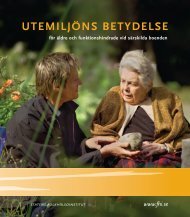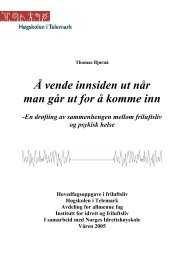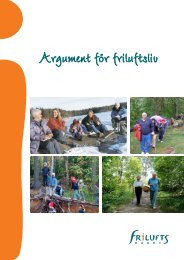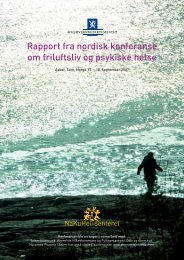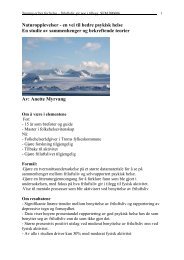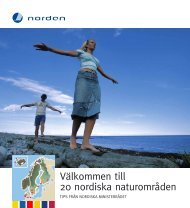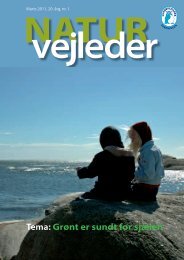Green Care: A Conceptual Framework - Frisk i naturen
Green Care: A Conceptual Framework - Frisk i naturen
Green Care: A Conceptual Framework - Frisk i naturen
Create successful ePaper yourself
Turn your PDF publications into a flip-book with our unique Google optimized e-Paper software.
6.6 Presence theory<br />
The presence approach was developed by Andries Baart, and is based<br />
on his long-term research among church ministers in disadvantaged<br />
neighbourhoods in Utrecht (Baart, 2001). Presence can be summarised as<br />
entering into a caring involvement in response to the universal need for<br />
intimacy and involvement (Kal, 2002). In general, people seem to thrive on<br />
company and to become more and more cut off if they lack it over a long<br />
period of time. In the presence approach, the care worker offers the client<br />
‘a caring presence’, in a relationship in which no hierarchical difference<br />
between the two people is assumed. No problem is formulated and<br />
analysed, no goal is established and no route towards reaching it is planned<br />
out. The ‘care worker’ is simply attentively present.<br />
Presence is based on the assumption that, potentially, everyone has the<br />
power to improve their lives themselves. It is a question of trust. The<br />
‘client’ is accepted in a meaningful relationship and the care worker<br />
constantly seeks to maintain a balance between providing help and trusting<br />
in the client’s own capacities; the latter feels that he or she is ‘seen’ and<br />
‘counts’. The care worker behaves professionally, yet as a friend. An<br />
orientation to the client’s world and experience lies at the heart of the<br />
presence approach. Being there, being together, doing things together –<br />
Baart considers these things are too often absent in pastoral care, which<br />
often focuses on intervention (Baart, 2001; Kal, 2002), whereas it is<br />
precisely in attentive, active interpersonal relationships that growth,<br />
learning and development occur (Dröes, 2003).<br />
References<br />
Baart, A. (2001) Een theorie van presentie. Lemna, Utrecht.<br />
Droës, J. and van Weeghel, J.(1994). Perspectieven van psychiatrische rehabilitatie. Maandblad<br />
Geestelijke Volksgezondheid, 49(8), 795-810.<br />
Kal, D. (2002) Kwartiermaken. Werken aan ruimte voor mensen met een psychiatrische achtergrond.<br />
Boom, Amsterdam.<br />
6.7 Work and employment<br />
Findings show that continuous employment is associated with better<br />
psychological and physical health (Isakssson, 1989; Bartley et al, 2004). It<br />
is not just a source of income, but fosters a sense of belonging. Research<br />
77







